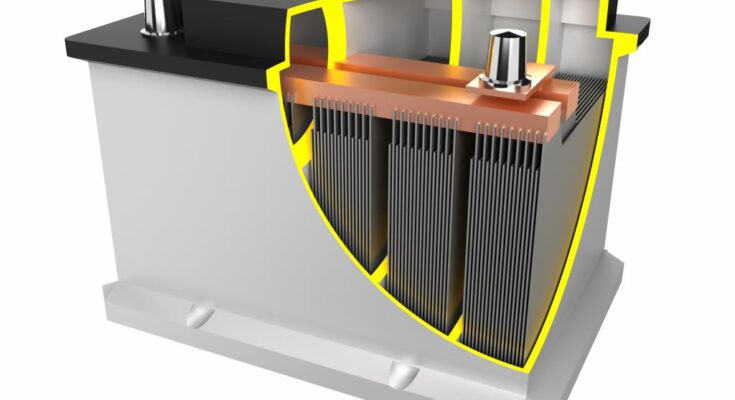Market Overview
Global advanced lead acid battery market was valued at USD 20.15 billion in 2022 and is estimated to reach a value of USD 31.16 billion by 2033 with a CAGR of 6.7% during the forecast period 2023-2032.
Get Exclusive Sample Copy of This Report Here: https://wemarketresearch.com/sample-request/advanced-lead-acid-battery-market/1062/
Report Scope
| Report Attributes | Description |
| Market Size in 2022 (Value) | USD 20,150 million |
| Market Forecast in 2033 (Value) | USD 31,160 million |
| CAGR % 2023-2031 | 6.7% |
| Base Year | 2022 |
| Historic Data | 2019-2021 |
| Forecast Period | 2023-2033 |
| Report USP | Production, Consumption, company share, company heatmap, company production capacity, growth factors and more |
| Segments Covered | Type, construction method and end user |
| Regional Scope | North America, Europe, APAC, South America and Middle East and Africa |
| Country Scope | U.S.; Canada; U.K.; Germany; France; Italy; Spain; Benelux; Nordic Countries; Russia; China; India; Japan; South Korea; Australia; Indonesia; Thailand; Mexico; Brazil; Argentina; Saudi Arabia; UAE; Egypt; South Africa; Nigeria |
| Key Companies | Enersys, Clarios, Exide Industries Limited, GS Yuasa International Limited, Leoch International Technology Limited, Crown Battery, Narada Power, Amara Raja Batteries Limited, The Furukawa Battery Co Limited, Trojan Battery Company |
Some Key Trends
Advanced lead batteries (ALBs) are a type of battery technology that uses advanced materials and manufacturing processes to improve the performance, efficiency, and durability of lead-acid batteries. Some key trends in the ALB market include:
Increasing demand for energy storage: As renewable energy sources like solar and wind power become more common, there is a growing need for energy storage solutions to store excess energy and provide backup power. ALBs are a cost-effective option for energy storage due to their high cycle life, low maintenance requirements, and relatively low cost compared to other energy storage technologies.
Growing adoption in automotive applications: ALBs are increasingly being used in automotive applications, particularly in start-stop systems and hybrid vehicles. These systems rely on batteries that can quickly charge and discharge, and ALBs are well-suited for this type of application due to their high power density and fast recharge times.
Development of new manufacturing techniques: Manufacturers of ALBs are developing new manufacturing techniques to improve the performance and durability of their batteries. This includes the use of advanced materials, such as carbon additives and lead crystal, as well as improvements in the production process itself to reduce the risk of sulfation and other forms of battery degradation.
Emphasis on sustainability: As with other battery technologies, there is a growing emphasis on sustainability in the ALB market. Manufacturers are exploring ways to improve the environmental impact of their products, such as through the use of recycled materials and closed-loop manufacturing processes.
Increased research and development: There is a significant amount of research and development happening in the ALB market, with manufacturers and academic institutions working to develop new materials, manufacturing processes, and applications for ALBs. This research is helping to drive innovation in the industry and expand the potential uses for ALBs.
Key Drivers
Manufacturers of advanced lead batteries (ALBs) are constantly working on developing new manufacturing techniques to improve the performance, efficiency, and durability of their batteries. Some examples of new manufacturing techniques being developed for ALBs include:
Carbon additives: Some ALB manufacturers are adding carbon additives to the battery plates to increase the surface area and improve the conductivity of the electrodes. This can help to reduce the resistance of the battery, which in turn improves the efficiency and performance of the battery.
Lead crystal technology: Lead crystal technology is a new manufacturing technique that involves growing lead crystals on the surface of the battery plates. This can help to reduce the rate of sulfation, which is a major cause of battery degradation. By reducing sulfation, ALBs can last longer and provide more reliable performance over time.
Advanced separators: Separators are a critical component of lead-acid batteries, as they help to prevent short circuits and allow the battery to operate safely and efficiently. Some ALB manufacturers are developing advanced separators made from new materials that offer improved durability and resistance to degradation.
Additive manufacturing: Additive manufacturing, also known as 3D printing, is a technique that allows manufacturers to create complex battery components with a high degree of precision and accuracy. This can help to improve the performance and efficiency of ALBs, as well as reduce the cost and time required to manufacture them.
Closed-loop manufacturing: Closed-loop manufacturing is a manufacturing process that aims to reduce waste and increase efficiency by recycling materials and minimizing the use of resources. Some ALB manufacturers are exploring closed-loop manufacturing techniques to improve the sustainability of their products and reduce their environmental impact.
Segmental Insights
The stationary advanced lead battery market has been witnessing several trends in recent years. Here are some of the notable trends:
Growing demand for renewable energy storage: With the increasing adoption of renewable energy sources such as solar and wind, there is a growing need for energy storage solutions. Stationary advanced lead batteries are seen as a cost-effective and reliable solution for energy storage in both residential and commercial applications.
Technological advancements: The stationary advanced lead battery industry has seen significant technological advancements in recent years. These advancements have led to improved battery performance, longer lifespan, and better energy density.
Increasing focus on sustainability: There is a growing emphasis on sustainability and reducing carbon footprint across industries. Stationary advanced lead batteries are considered a sustainable option due to their high recyclability rate and low environmental impact.
Rising demand for backup power: With the increasing frequency of power outages, there is a growing demand for backup power solutions. Stationary advanced lead batteries are seen as a reliable backup power solution for both residential and commercial applications.
Growing adoption in emerging economies: The stationary advanced lead battery market is witnessing significant growth in emerging economies such as China and India. This growth is driven by factors such as increasing urbanization, growing demand for electricity, and the need for reliable backup power solutions.
Overall, the stationary advanced lead battery market is expected to continue growing in the coming years, driven by the increasing demand for renewable energy storage and reliable backup power solutions.
Advanced lead-acid batteries are increasingly being used in the utility sector as a cost-effective and reliable solution for energy storage. Here are some of the factors driving the demand for advanced lead-acid batteries in utilities:
Grid stability: The increasing use of renewable energy sources such as solar and wind is leading to a more decentralized grid system. Advanced lead-acid batteries can be used to store excess energy generated by these sources and provide grid stability by releasing stored energy during peak demand.
Demand response: Utilities are increasingly using demand response programs to manage electricity demand during peak hours. Advanced lead-acid batteries can be used as part of these programs to store energy during off-peak hours and release it during peak demand, reducing the strain on the grid.
Frequency regulation: Advanced lead-acid batteries can also be used for frequency regulation, which involves adjusting the frequency of the grid to maintain a stable electricity supply. This is particularly important for grids that rely heavily on renewable energy sources, which can be intermittent.
Reliability: Advanced lead-acid batteries are known for their reliability, with a proven track record of providing backup power in critical applications such as data centers and hospitals. This makes them an attractive option for utilities looking for a reliable energy storage solution.
Cost-effectiveness: Advanced lead-acid batteries are a cost-effective energy storage solution compared to other options such as lithium-ion batteries. This makes them a viable option for utilities looking to invest in energy storage without breaking the bank.
Regional Insights
China is a major player in the advanced lead-acid battery industry and has been witnessing increasing demand for these batteries in recent years. Here are some of the factors driving the demand for advanced lead-acid batteries in China:
Renewable energy storage: China has been investing heavily in renewable energy sources such as solar and wind in recent years. Advanced lead-acid batteries are a cost-effective and reliable solution for energy storage in these applications, driving demand for these batteries.
Electric vehicles: China is the world’s largest market for electric vehicles (EVs), and advanced lead-acid batteries are a key component of these vehicles. Lead-acid batteries are commonly used in low-speed EVs such as electric scooters and golf carts, which are popular in China.
Backup power: China experiences frequent power outages, particularly in rural areas. Advanced lead-acid batteries are a reliable backup power solution for homes and businesses, driving demand for these batteries.
Telecommunications: China is the world’s largest market for telecommunications equipment, and advanced lead-acid batteries are commonly used in these applications. These batteries provide backup power for cell towers and other critical telecommunications infrastructure.
Growing industrialization: China’s rapid industrialization has led to increasing demand for reliable and cost-effective energy storage solutions. Advanced lead-acid batteries are seen as a viable option for industrial applications such as backup power for factories and energy storage for microgrids.
Overall, the demand for advanced lead-acid batteries in China is expected to continue growing in the coming years, driven by the increasing adoption of renewable energy sources, electric vehicles, and the need for reliable backup power solutions in both urban and rural areas.
South Africa is a growing market for advanced lead-acid batteries, and the industry has been witnessing several trends in recent years. Here are some of the notable trends:
Growing demand for renewable energy storage: South Africa has abundant solar resources and is investing heavily in renewable energy sources such as solar and wind. Advanced lead-acid batteries are a cost-effective and reliable solution for energy storage in these applications, driving demand for these batteries.
Backup power: South Africa experiences frequent power outages, particularly in rural areas. Advanced lead-acid batteries are a reliable backup power solution for homes and businesses, driving demand for these batteries.
Telecommunications: South Africa has a growing telecommunications industry, and advanced lead-acid batteries are commonly used in these applications. These batteries provide backup power for cell towers and other critical telecommunications infrastructure.
Electric vehicles: The adoption of electric vehicles is still in its early stages in South Africa, but there is a growing interest in EVs, particularly in the commercial sector. Advanced lead-acid batteries are a key component of low-speed EVs such as electric scooters and golf carts, which are popular in South Africa.
Recycling: There is a growing emphasis on sustainability and reducing waste in South Africa, and advanced lead-acid batteries are seen as a sustainable option due to their high recyclability rate. The industry is focusing on developing more efficient and environmentally-friendly recycling processes.
Overall, the demand for advanced lead-acid batteries in South Africa is expected to continue growing in the coming years, driven by the increasing adoption of renewable energy sources, the need for reliable backup power solutions, and the growth of the telecommunications industry.
Competitive Landscape
The advanced lead-acid battery industry is dominated by a few major players, each with their own strategies to maintain market share and drive growth. Here are some examples of the strategies of top companies in this industry:
Exide Technologies: Exide Technologies is a global provider of stored energy solutions, including advanced lead-acid batteries. The company’s strategy focuses on expanding its product offerings and market share through strategic partnerships and acquisitions. In 2021, the company acquired Aker Wade Power Technologies, a leading provider of advanced charging solutions for electric vehicles, to expand its presence in the EV market.
Johnson Controls: Johnson Controls is a global leader in advanced lead-acid batteries, with a strong focus on innovation and sustainability. The company’s strategy centers around developing new and advanced battery technologies, such as its Absorbent Glass Mat (AGM) and Enhanced Flooded Battery (EFB) technologies, to meet the evolving needs of the market. The company also places a strong emphasis on sustainability and reducing its environmental impact through its recycling programs and other initiatives.
EnerSys: EnerSys is a global provider of stored energy solutions, including advanced lead-acid batteries. The company’s strategy focuses on expanding its global presence through organic growth and strategic acquisitions. In 2021, the company acquired Alpha Technologies, a leading provider of power solutions for critical infrastructure, to expand its presence in the telecommunications and data center markets.
GS Yuasa: GS Yuasa is a Japanese company that is a leading manufacturer of advanced lead-acid batteries. The company’s strategy focuses on developing new and advanced battery technologies, such as its AGM and Lithium-ion hybrid batteries, to meet the needs of the automotive and industrial markets. The company also places a strong emphasis on expanding its global presence through strategic partnerships and joint ventures.
Why to buy this Report?
The report provides quantitative and qualitative aspect for the market in terms of value and volume, along with supporting market trends, challenges, restraints.
The report provides an in depth analysis from both production and consumption point of view at the regional and country level. Key Factors considered within the report scope are Production capacity by countries/regions, average price, consumption ratio, revenue earned and gross margin.
The report provides competitive analysis of around 30-50 companies operated in the market, these companies are bifurcated into niche players, the leaders and major contenders. The companies are analyzed in terms of following factors such as:
- Business Model
- Production Capacity, Revenue, Sales, Gross Margin
- Key Business Strategy
- SWOT Analysis
In terms of competitive landscape, the report provides distinctive factors that would help the end user in taking a key decision within the business:
- Company Share Analysis from 2018-2022 Company Analysis by Revenue and Sales
- Company Production Capacity, Gross Margin
- Company Share Analysis by Application/End Use
- Company Share Analysis by Product/Specification
By Type
- Stationary
- Motive
By Construction Method
- Flooded
- VRLA
By End User
- Utility
- Transportation
- Industrial
- Commercial and Residential
Companies
- Enersys
- Clarios
- Exide Industries Limited
- GS Yuasa International Limited
- Leoch International Technology Limited
- Crown Battery
- Narada Power
- Amara Raja Batteries Limited
- The Furukawa Battery Co Limited
- Trojan Battery Company
By Region
• North America
o U.S.
o Canada
o Mexico
• Europe
o Germany
o France
o UK
o Italy
o Spain
o Russia
o Rest of Europe
• Asia Pacific
o China
o Japan
o India
o Australia
o South Korea
o ASEAN
o Rest of APAC
• South America
o Brazil
o Argentina
o Chile
o Rest of South America
• Middle East and Africa
o Saudi Arabia
o UAE
o South Africa
o Rest of MEA
Get A Report Copy of this Market: https://wemarketresearch.com/reports/advanced-lead-acid-battery-market/1062/
Key Questions Answered in the Report:
- What will be the development pace of market? What is the growth rate of the global market?
- Who are the key manufacturers in the market space? Who are the world’s leading manufacturers?
- What are sales, revenue, and price analysis of the top manufacturers of market?
- Who are the distributors, traders, and dealers of market? What are the key factors driving the Global market?
- What are the market opportunities and threats faced by the vendors in the industries?
- What are deals, incomes, and value examinations by types and applications of the market?
- What are the primary factors driving market?
- What are the market’s advantages, disadvantages, and risks, as well as an overview of the market?
- Who are the Top Manufacturers in the Market in Terms of Sales, Revenue, and Price Analysis?
- Analysis of Industry Revenue, Sales, and Pricing, what is the difference between Equipment by region, type, and application?



